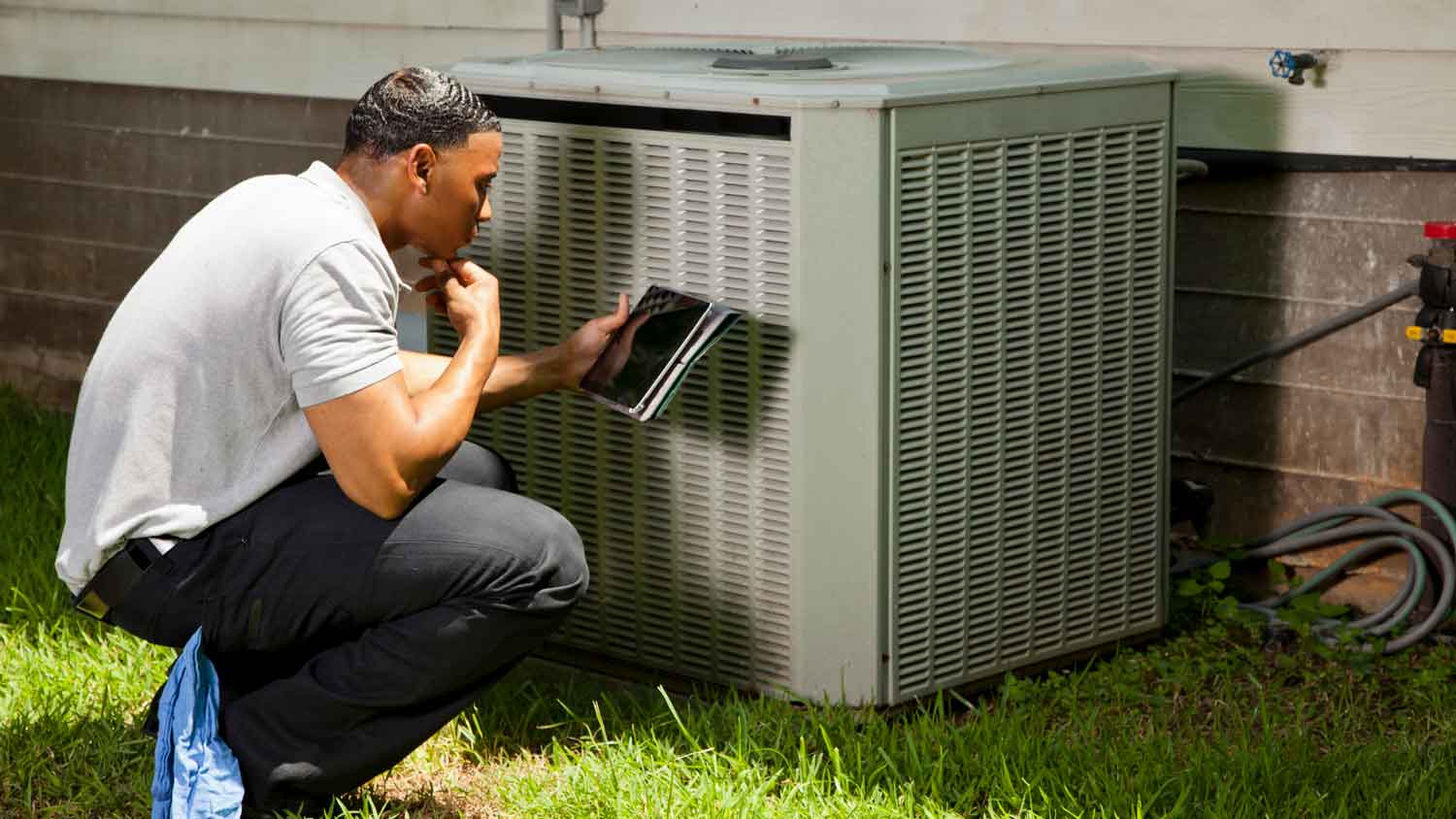Does a Home Warranty Cover HVAC Repairs?
A home warranty can bring you peace of mind if your HVAC system breaks down


Home warranties help offset the costs of replacing or repairing an HVAC system.
Some HVAC components might not be covered under your policy.
Plans typically include things like AC units, heating systems, and water heaters.
You may be able to upgrade your plan for additional coverage.
Before buying a new house, you probably take every precaution to make sure that everything is in good working order. But even the most rigorous inspection can’t predict when certain systems or appliances might wear out. That’s why it’s helpful to have a home warranty plan, which covers some repair or replacement costs. But does a home warranty cover HVAC? Yes, but there are some caveats. Let’s dig into the specifics of home warranty coverage, and learn when to consult your local HVAC company.
What’s Included in Home Warranty Coverage
What’s included in your home warranty will vary depending on the company you buy it from and the level of coverage that you choose. However, most basic plans will protect:
Plumbing systems
Electrical systems
HVAC systems
Kitchen appliances, including ovens, refrigerators, and dishwashers
Home security systems
You can also sign up for advanced home warranty coverage, which can include things like:
Swimming pools, spas, and hot tubs
Sprinkler systems
Plumbing fixtures and exterior plumbing
Appliances outside of your kitchen, including additional refrigerators, stoves, and ovens
Electronics, such as TVs and speakers
Which Parts of an HVAC System Are Covered in Your Home Warranty?

So, does a home warranty cover HVAC repairs or replacements? The short answer: yes. Whether you pick a basic or advanced home warranty, it should include some level of HVAC protection.
However, that doesn’t necessarily mean that it will cover every component of your HVAC system. Typically, your warranty will provide discounts on repairs or replacements on things like central air conditioning, heating systems, and water heaters.
There are many types of HVAC systems, including split and hybrid systems. Before buying a home warranty, read the fine print to make sure that it includes coverage for the kind of HVAC system that you have. Certain HVAC components, like portable and window AC units, may not be protected.
How Much Does a Home Warranty Cost?
When you buy a home warranty, you’ll pay a monthly or annual fee, which will protect your appliances and systems for a year after you sign up. On average, a home warranty premium costs between $220 and $1,800 per year, with most people paying about $1,050 for a year’s worth of coverage. On top of that, you’ll usually have to pay a service fee of $80 to $130 every time your warranty company sends a pro for repairs.
What Else You Should Know About HVAC Systems and Home Warranties
On the surface, home warranty plans might seem like a great way to protect yourself from pricey HVAC expenses. However, these policies aren’t always what they seem, and it’s important to understand what you’re signing up for.
Home Warranties Only Apply in Certain Cases
Your warranty will only be valid in cases of normal wear and tear or age-related failures. In other words, if your HVAC system sustains damage from a storm and you have to call in the help of a local HVAC company, you can’t use your home warranty to help pay for the repairs or replacement.
Similarly, your warranty won’t cover issues that arise from poor maintenance on your part. In fact, not scheduling routine HVAC maintenance or trying to troubleshoot problems yourself can void your warranty.
By working on your HVAC system or undergoing important repairs on your own, you could void your unit’s warranty or further damage the system. Leave HVAC repairs to the pros.
When submitting a claim, your provider might ask for inspection reports or other proof that you’ve been maintaining your system. If you can’t provide it, they might not approve your request.
Common Issues Covered by Home Warranty Coverage
Normal wear and tear of HVAC system
Age-related failures of HVAC system
Routine inspections and maintenance
Common Issues Not Found Under Warranty
Damage to portable AC devices
Existing issues with HVAC system prior to purchasing home warranty
Damage caused by lack of maintenance and upkeep
Damage from a natural disaster, such as a fire or flood
There May Be Limits
Many warranty plans have limits on how much the insurer will pay to repair or replace the various parts of your HVAC system. For example, your policy may only include $1,500 worth of ductwork repairs, or there might be an annual cap on all of your claims.
You Might Not Get a Complete HVAC Replacement
Finally, your plan might protect certain parts of your heating and cooling system, but does home warranty cover HVAC replacement entirely? Not necessarily.
Your provider will generally be the one to choose whether repairing or replacing your system is best. If they believe that the damage is repairable, they’ll probably try that first. If that doesn’t work, they may approve you for a full replacement—but they might only offer a few models, which aren’t always top-of-the-line products.
Frequently Asked Questions
It’s easy to confuse home warranties with homeowners insurance, but they aren’t the same thing. The key difference is that warranties protect your appliances and systems, but insurance guards your house against disasters like fires and storms. Keep in mind that warranties may not cover repairs if the issue was caused by a DIY job gone wrong.
Home thermostats are covered in most home warranty plans. However, if you want your warranty to cover any repairs or replacements that you may need, you’ll need to keep your thermostat in good condition. This means cleaning and dusting it regularly, as well as making sure it has fresh batteries (if it’s battery-operated).
HVAC systems usually last between 10 and 30 years, with most having a lifespan of around 20 years. Factors that impact a unit’s life expectancy include which brand you choose, how often you use it, and how well you maintain it. To make sure yours lasts as long as possible, make sure to keep it clean and schedule an annual service with an HVAC technician.





- Furnace Repair
- Air Conditioning Repair
- HVAC Repairs
- Furnace Installation
- Wood & Pellet Stove Repair
- Dehumidifier & Humidifier Repair
- Heat Pump Companies
- Swamp Cooler Repair
- Wood Stove Services
- HVAC Companies
- Commercial A/C Repair
- Geothermal Installation
- Air Conditioning Installation
- Boiler Repair
- 24 Hour Furnace Repair
- Geothermal Repair
- Heat Pump Repair
- Humidifier Installation
- Thermostat Repair
- Thermostat Installation
- Nest Installation
- Heating & Cooling
- Heating Repair
- Furnace Cleaning
- Furnace Tune-Up
- HVAC Technicians
- Subcontractors
- Furnace Maintenance
- Plumbing & Heating Companies
- Wood Stove Inspection
- Mini Split Installation
- Wall Heater Repair
- Duct Installers











